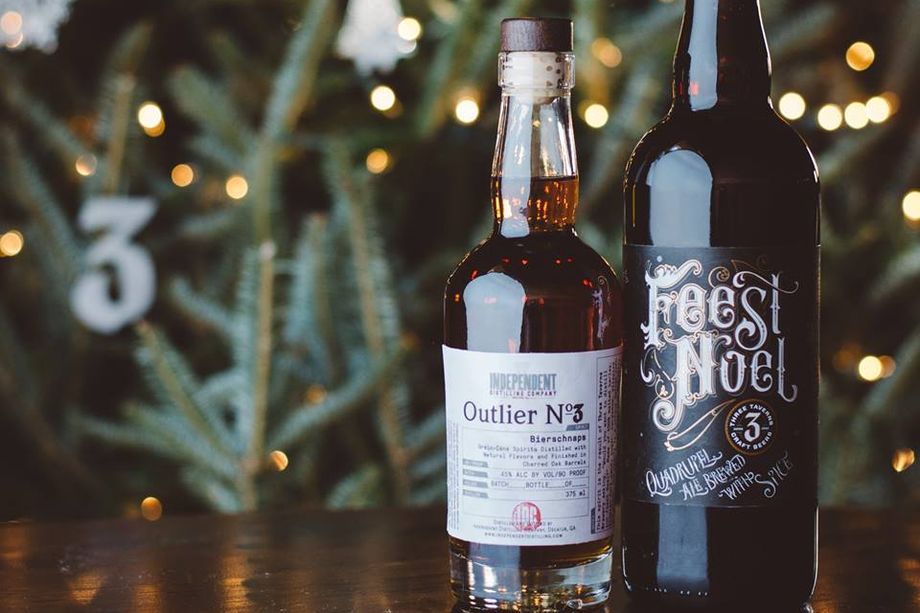
If you’re into whiskey, you may have heard the expression “distiller’s beer” which refers to the fermented mash of grains, yeast, and water that feeds the first distillation. Typically these are not beers that are meant to be consumed on their own, but a few craft distillers are now working with existing craft beers and using them as their distiller’s beer in special releases. There’s the Samuel Adams Boston Lager that becomes Berkshire Mountain Distillers’ Two Lanterns whiskey, or Arcane Distilling’s Lone Wolf line of whiskey made from various micro-craft (and homebrew) beers, or Charbay’s R5 Whiskey which is distilled from Bear Republic Brewery’s Racer 5 IPA, or HUB Brewer’s Whisky made at New Deal Distillery from HUB Organic Lager. Even more crafty, J. Rieger & Co. in Kansas City is using slightly-past-its-prime beer from nearby Boulevard brewery as the starting point for their Left for Dead series.
Here in Atlanta, two recent craft beer-distillery collaborations have taken up the charge of beer before liquor, both to rather impressive results. There’s Decatur-based Independent Distilling Co., who used the Feest Noel beer from neighboring Three Taverns brewery to make their Outlier series Bierschnaps; and ASW Distillery, who partnered with Monday Night Brewing to develop a custom distiller’s beer and turn it into Monday Night Scottish-Style Single Malt Whiskey.
Both of these collaborations are unique and, more importantly, quite tasty. If you’re into the esoteric and local and can manage to find a bottle, whether at the distilleries themselves or in limited local release around Atlanta, they reward the investment. And both are harbingers of good things to come as the craft beer and distilling scenes in Atlanta (and beyond) continue to grow side by side.
Here are the details and tasting notes on these two very special (and limited) beer-to-liquor success stories:
Independent Distilling Co., Outlier No. 3 Bierschnaps
Base Beer: Three Taverns 2014 Feest Noel (300 gallons) – made with 100% malted barley, Belgian dark candy sugar, cardamom, allspice, and clove.
Distillation: Alembic pot still (in February 2015)
Aging: 22 months in newly charred American oak barrels (two 15 gallon barrels)
Bottled at 90 proof
Notes: I first tasted this one out of the barrel about halfway through its aging process, and the prominent baking spice notes on the nose and palate had me thinking of Cocchi Vermouth di Torino (one of my favorite sweet vermouths). The extra time in the barrel until release lent this Bierschnaps further depth and complexity – starting delicately with a floral yet spicy nose, then hitting the tongue hard with a slap of cinnamon and clove backed up with toasty burnt caramel notes. The aging in those small barrels (for more interaction with the wood) is evident in a dark and oaky finish. Simply fascinating stuff, especially if you can get a hold of a bottle of Feest Noel and compare the two. The spice notes here offer some fun opportunities for cocktail experimentation as well (Kimball House recently made a Sazerac variation with the Outlier No. 3 combined with aged rum).
The Outlier No. 3 Bierschnaps actually has a release party tonight (if you’re reading this on March 23) at the Argosy if you want to snag a taste of this very limited run!
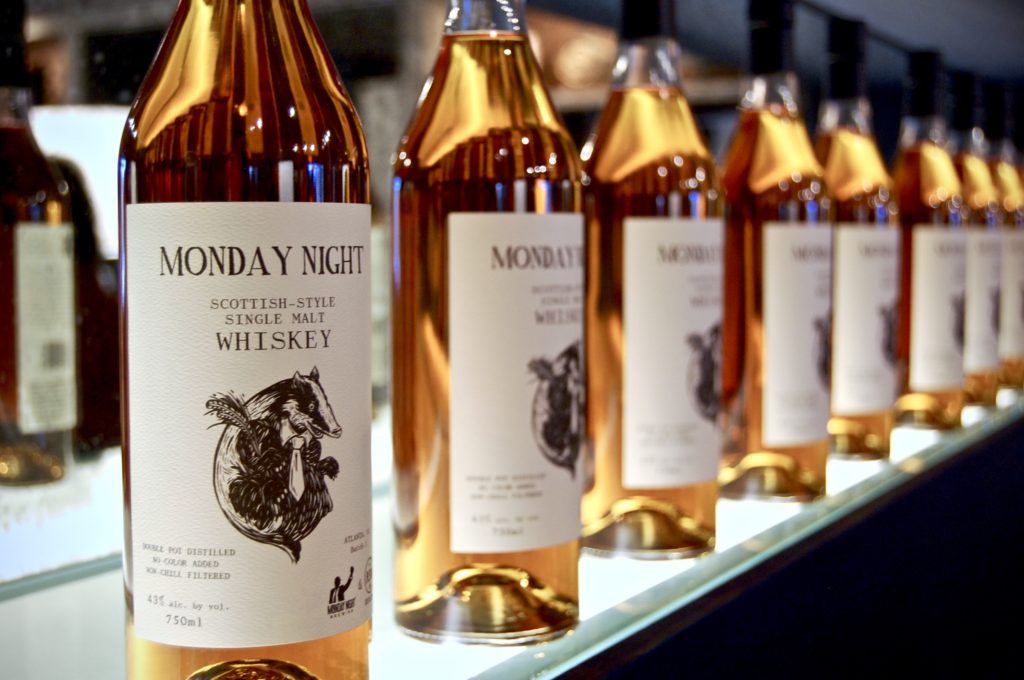
Monday Night Scottish-Style Single Malt Whiskey
Base Beer: Custom batch from Monday Night Brewing, made with a hefty dose of cherrywood-smoked malt barley (which is a component malt in their popular Drafty Kilt Scotch Ale) and two-row malt barley.
Distillation: Scottish-style twin copper pot stills (in August 2016)
Aging: Roughly 6 months in new charred American white oak quarter casks (13 gallons)
Bottled at 86 proof
Notes: How is this lovely whiskey merely six months old? The nose may not give much away, with light hints of marzipan playing coy, but you can tell there’s much more of interest underneath. If you sit with it long enough, the cherrywood smoke comes through in subtle wisps at the tail end of deep breaths in. Sipping, the “Scottish-style” character emerges, but this is no peaty beast – think of the more delicate end of Scotch and you’ll be in the right territory. The malted barley here provides a pleasant cereal warmth, balanced with a light wildflower honey sweetness, and the finish leaves a happy memory on your tongue for several minutes. ASW is turning out mighty impressive limited releases (like this and their Resurgens Rye) for such a young distillery. And you have to love a label with a badger in a bowtie.
Full Disclosure: The tasting bottle of Monday Night was provided by ASW Distillery.
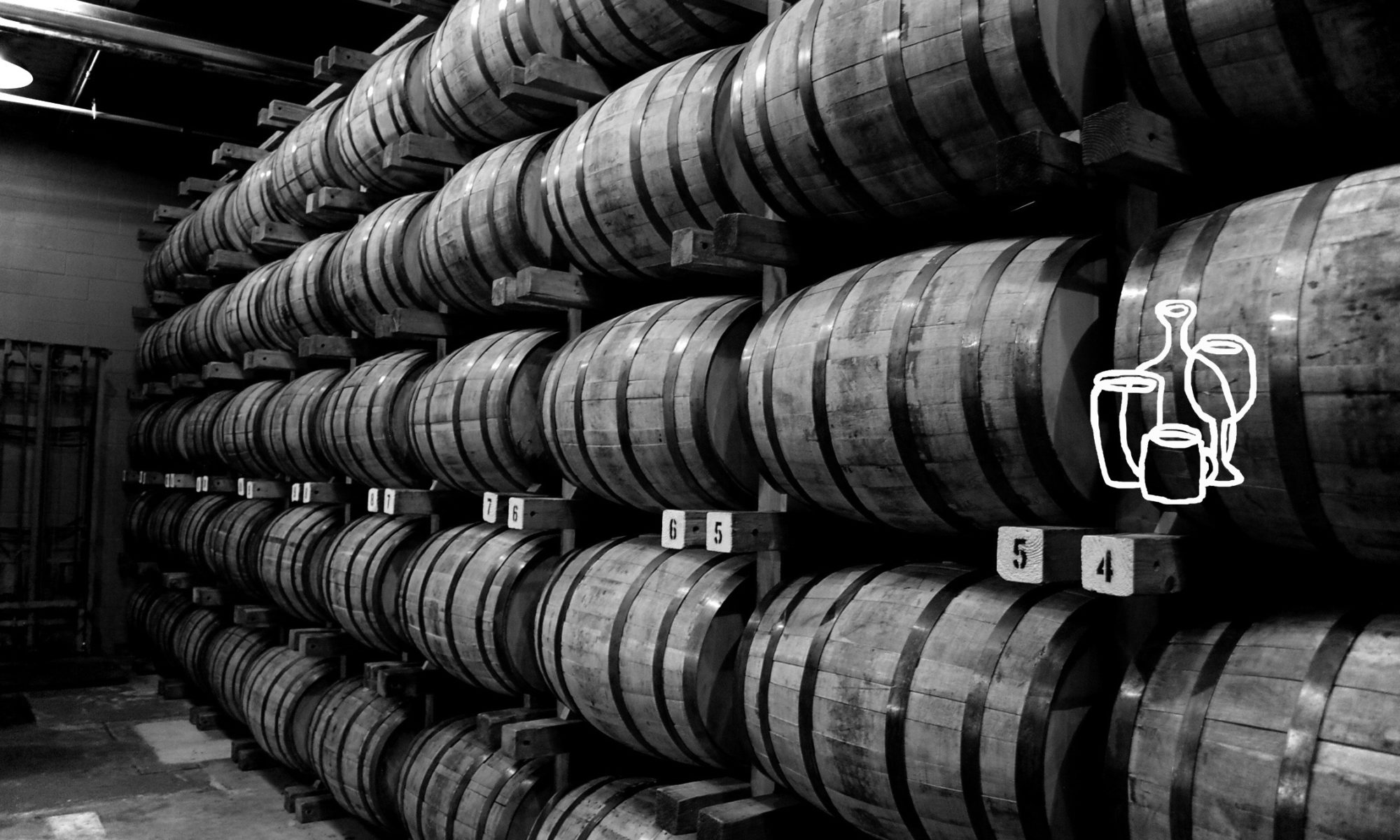

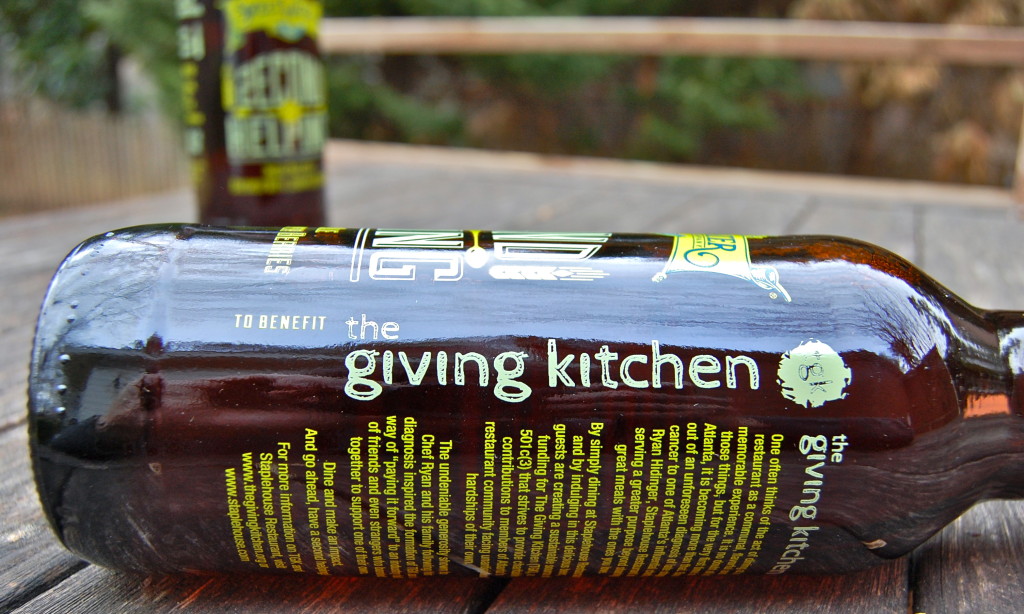
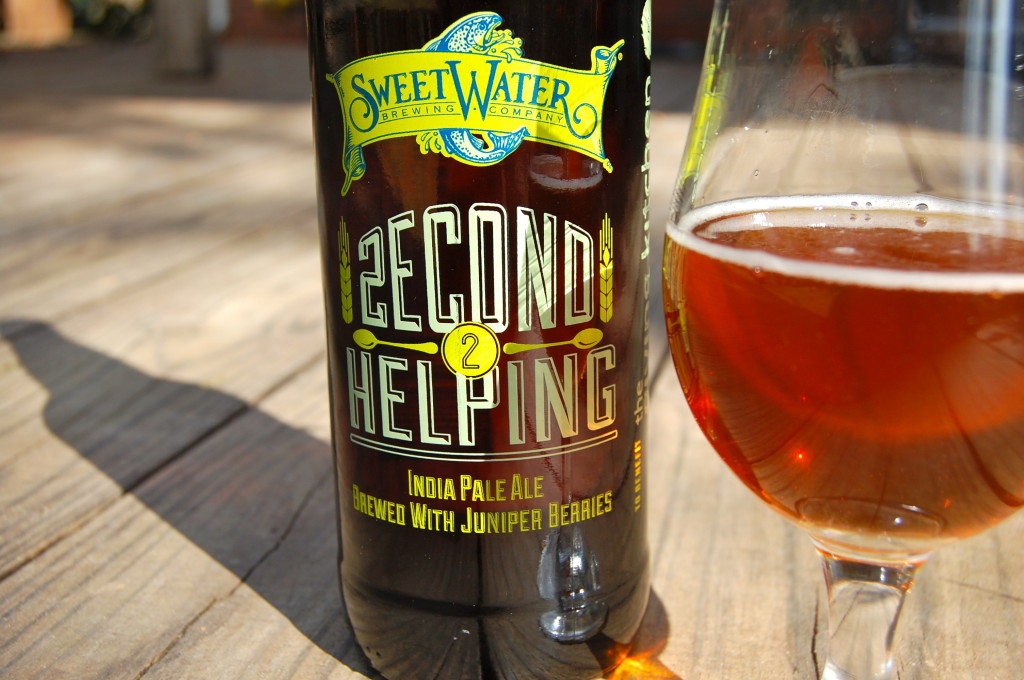
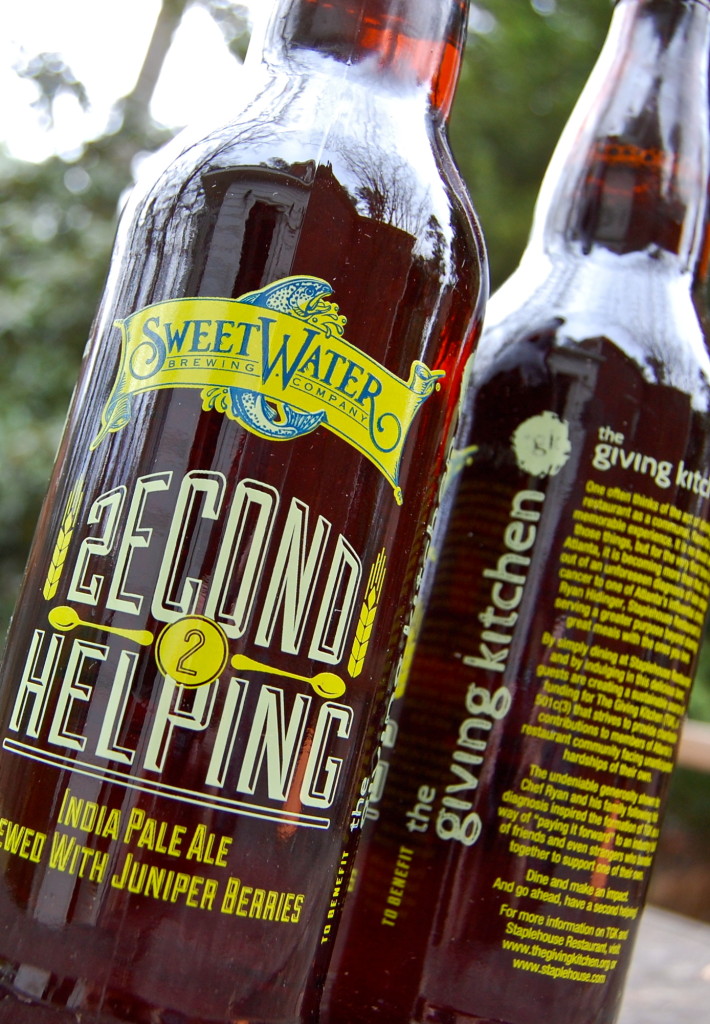
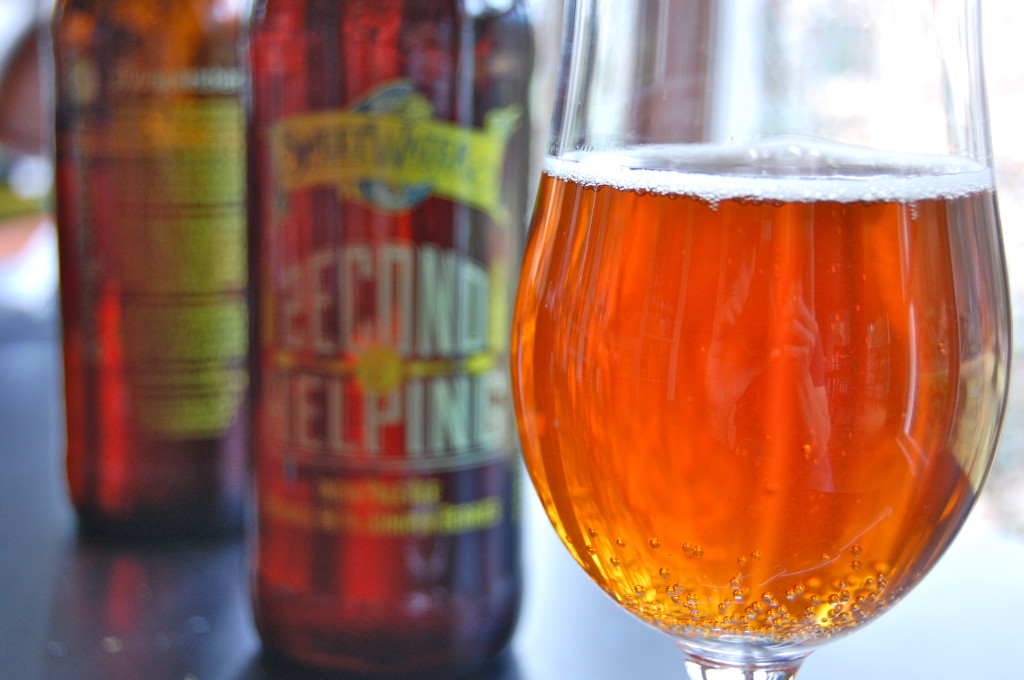
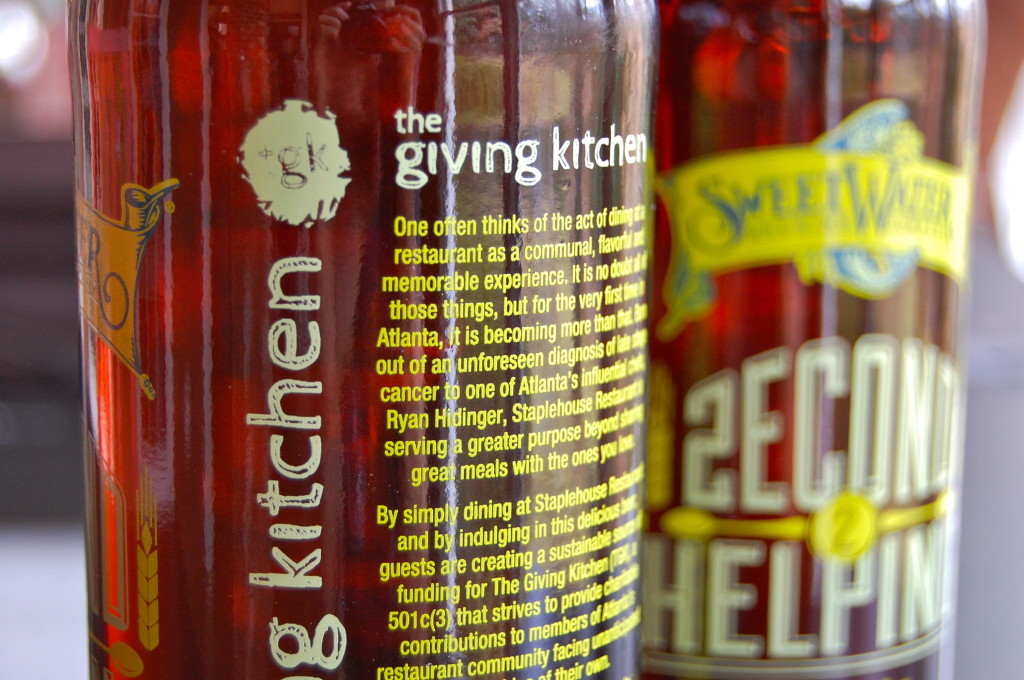
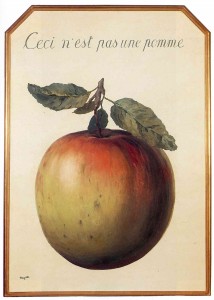
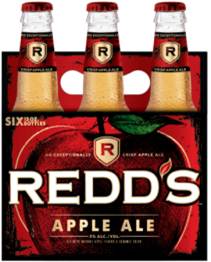 Redd’s Apple Ale
Redd’s Apple Ale


 Coffee? Holy smokes, it seems like there are excellent coffee choices every block or so in Manhattan and Brooklyn. I had the wonderful New Orleans ice coffee at
Coffee? Holy smokes, it seems like there are excellent coffee choices every block or so in Manhattan and Brooklyn. I had the wonderful New Orleans ice coffee at 
